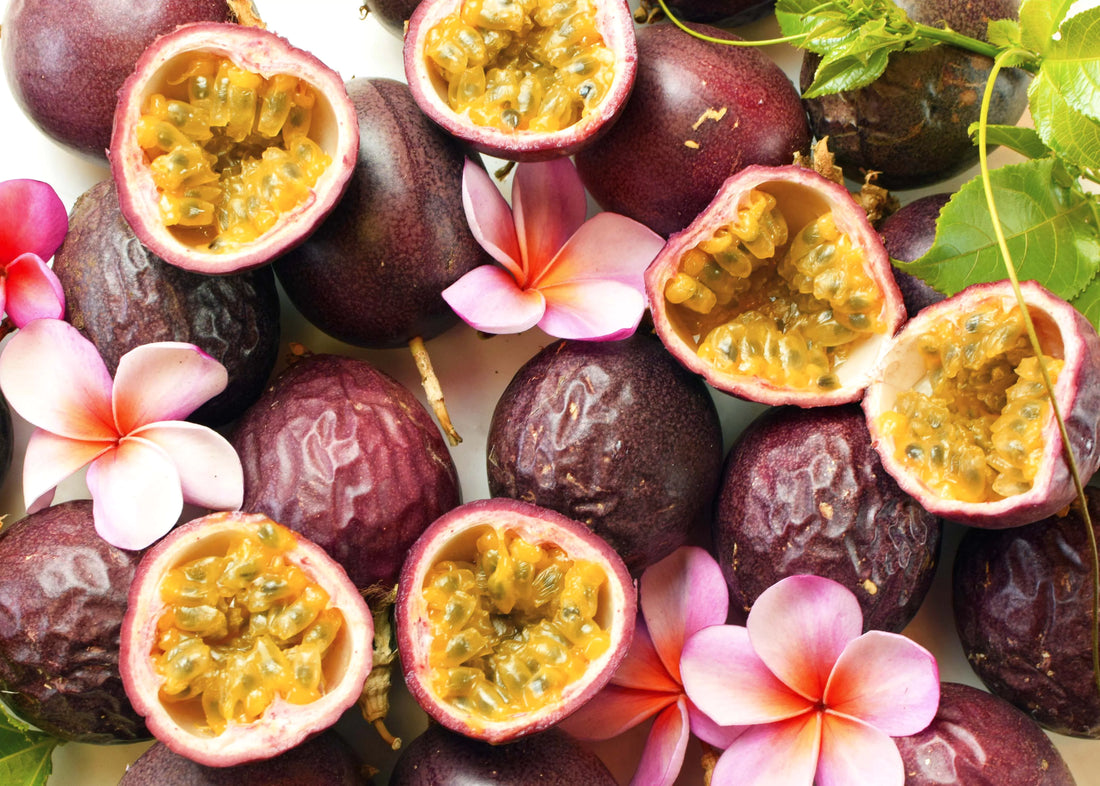How to Care for Passion Fruit Plant
The passion fruit plant is a stunning tropical vine known for its striking flowers and delicious fruit. With the right care, your passion fruit vine can thrive, producing lush foliage, vibrant flowers, and plenty of fruit. This guide will walk you through the essential care practices for a healthy and productive passion fruit plant, from watering and fertilizing to pest management and pruning.
Watering Needs for Passion Fruit Plants
Watering is critical for maintaining the health of a passion fruit plant. These plants prefer consistently moist soil but are also sensitive to waterlogged conditions.
-
Consistent Moisture: Ensure the soil stays evenly moist, especially during the growing season. Water the plant deeply once or twice a week, depending on rainfall and climate, to maintain healthy growth and fruit production.
-
Avoid Overwatering: Passion fruit vines are prone to root rot, so it’s essential to avoid overwatering. If you’re growing a passion fruit plant in a pot or container, make sure it has proper drainage to prevent water from accumulating at the bottom.
-
Mulching: Apply a layer of mulch around the base of the plant to help retain soil moisture and regulate temperature. Mulching is especially helpful if you’re growing a passion fruit climber outdoors, as it helps protect roots from temperature fluctuations.
Fertilizing Your Passion Fruit Plant
Passion fruit plants are heavy feeders and benefit from regular fertilization to support their vigorous growth and high fruit yield.
-
Balanced Fertilizer: Apply a balanced fertilizer every 4-6 weeks during the growing season. Fertilizers high in nitrogen, phosphorus, and potassium are ideal, as they encourage strong vine growth and abundant fruit production.
-
Organic Matter: Enrich the soil with organic compost or manure in early spring to give the plant a boost of nutrients. If you’re growing passion fruit seeds for planting, organic matter helps young plants establish strong roots.
-
Supplemental Feeding: In addition to a balanced fertilizer, supplement with trace minerals like magnesium and iron, especially if the leaves start yellowing. This is important for varieties such as Passiflora edulis, which can be sensitive to nutrient deficiencies.
Pruning and Training the Passion Fruit Vine
Regular pruning is crucial for maintaining the health and structure of a passion fruit vine. Pruning encourages new growth, improves air circulation, and keeps the plant manageable.
-
When to Prune: Prune the plant in late winter or early spring, removing any dead or diseased wood. Pruning before the growing season begins allows the plant to focus its energy on healthy new growth.
-
Training the Vines: As a natural climber, the passion fruit plant will need support structures like a trellis, fence, or arbor. Train the vines by gently guiding or tying them to the support, which keeps the plant organized and optimizes sun exposure.
-
Removing Excess Growth: Throughout the growing season, trim back overgrown or tangled vines to maintain airflow. This is especially important for high-density passion fruit climber growth, as good airflow reduces the risk of fungal infections.
Pest and Disease Management
Passion fruit plants are generally hardy but can be susceptible to certain pests and diseases. With regular monitoring and timely action, you can keep these issues under control.
-
Common Pests: Aphids, spider mites, and caterpillars are common pests that may affect passion fruit vines. Inspect your plant regularly, and if pests are found, treat with insecticidal soap or neem oil. Introducing beneficial insects like ladybugs can also help manage pest populations.
-
Preventing Disease: Passion fruit plants are prone to fungal infections like root rot and leaf spots, especially in humid conditions. Ensure good air circulation by pruning and training the vine properly. Avoid overhead watering, as wet leaves are more susceptible to fungal infections.
-
Root Rot Prevention: Root rot is a common issue in potted passion fruit plants or areas with poor drainage. Planting in well-draining soil and avoiding overwatering are key to preventing this disease.
Common Questions About Caring for Passion Fruit Plants
-
Can I grow passion fruit indoors?
Yes, passion fruit plants can be grown indoors if provided with ample sunlight and a large pot. They do best in a bright, south-facing window and need regular pruning to manage growth indoors. -
How often should I fertilize a container-grown passion fruit plant?
For potted passion fruit plants, fertilize every 4-6 weeks during the growing season. Container plants may require more frequent fertilization, as nutrients leach out faster from the soil. -
Do passion fruit vines need support?
Yes, as natural climbers, passion fruit vines need a support structure like a trellis or fence to grow upward. Support keeps the vines organized, improves sun exposure, and makes harvesting easier.
Conclusion
Caring for a passion fruit plant requires consistent attention to watering, fertilization, pruning, and pest management. By providing the right environment and following these care practices, you’ll enjoy a healthy, thriving plant that produces abundant fruit and adds beauty to your garden. With these tips, your passion fruit plant will reward you with vibrant flowers and delicious fruit season after season.





